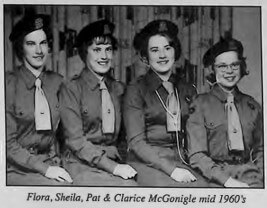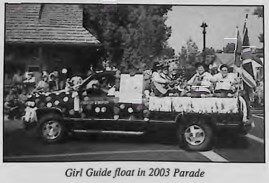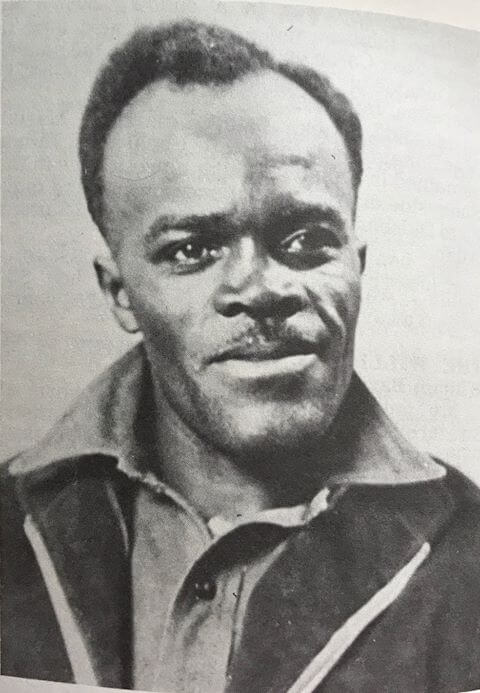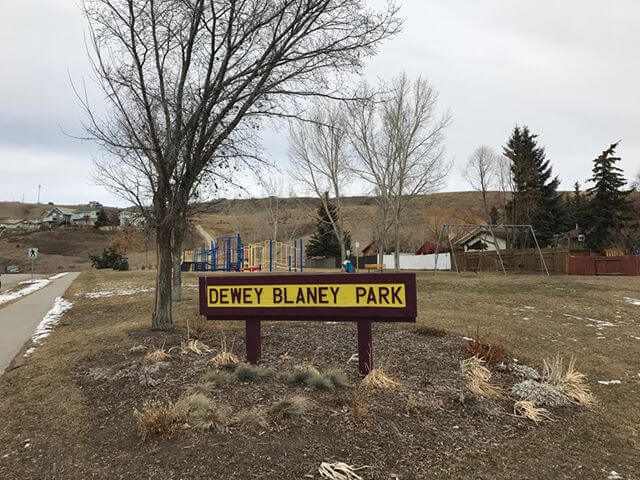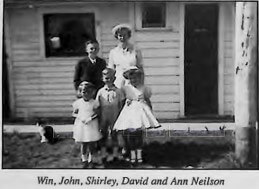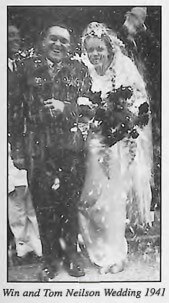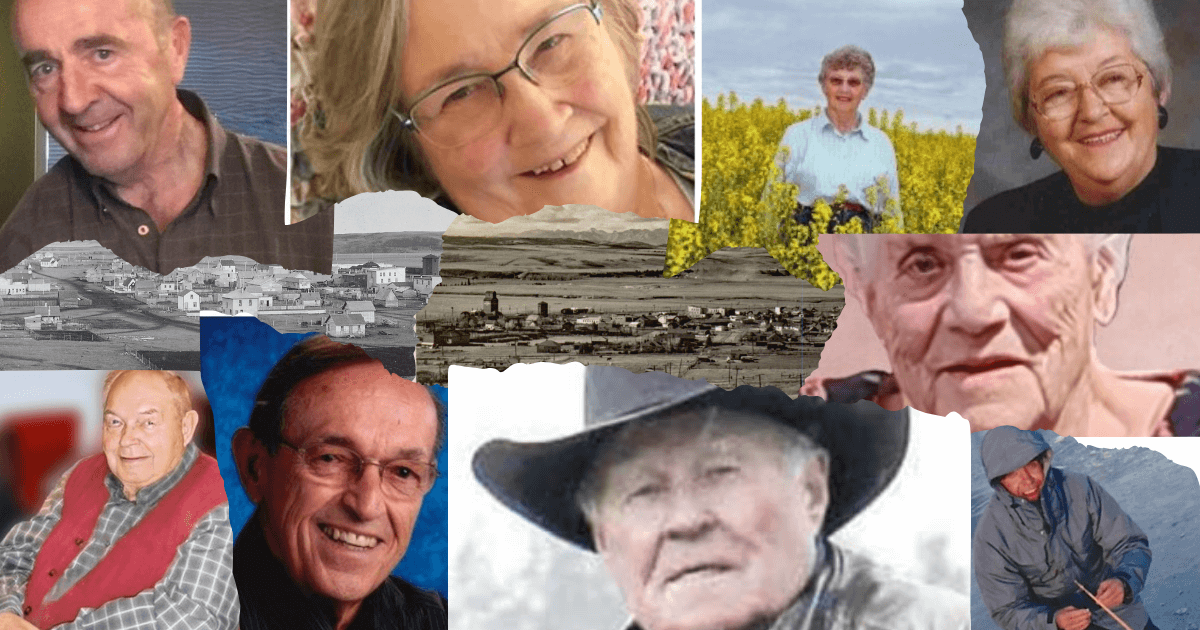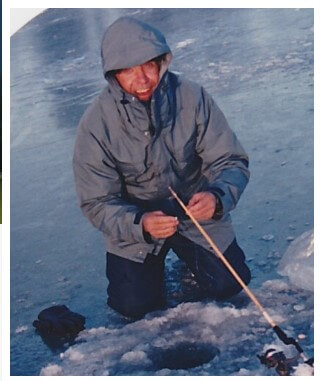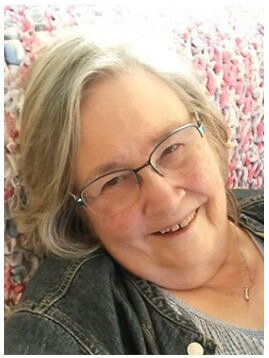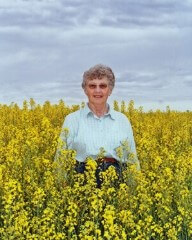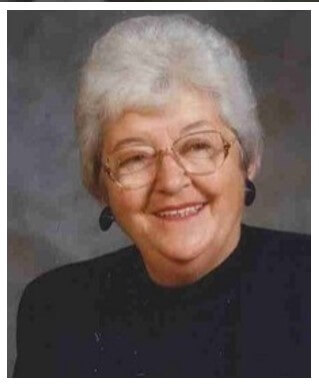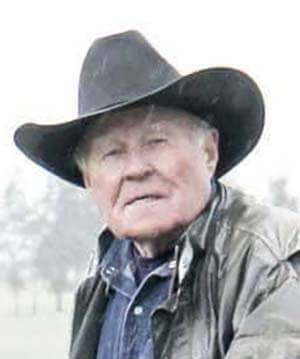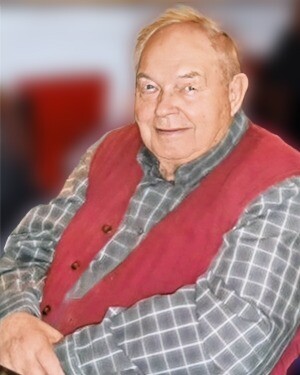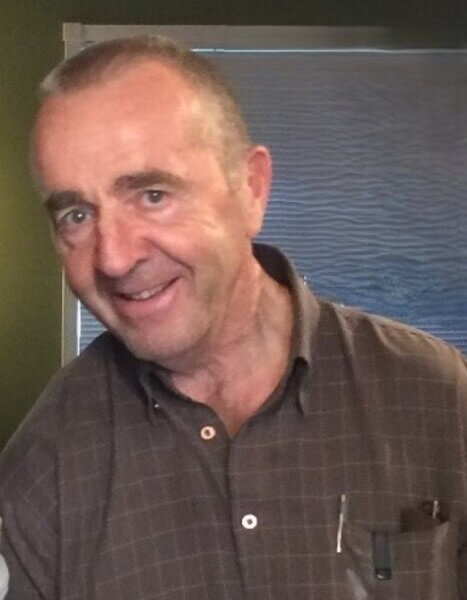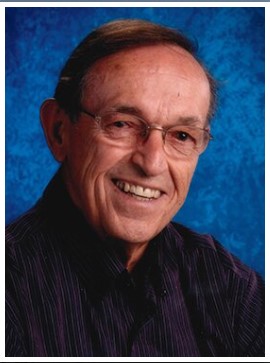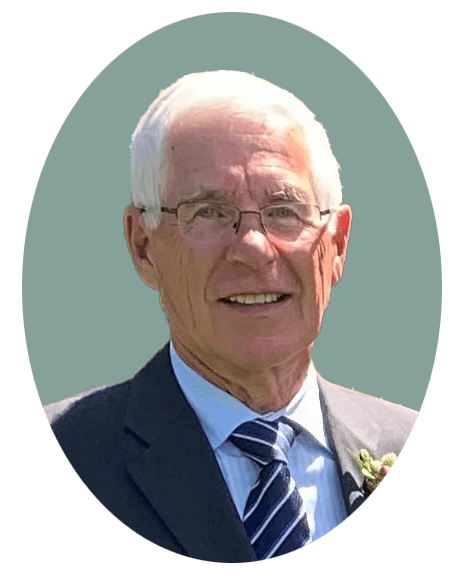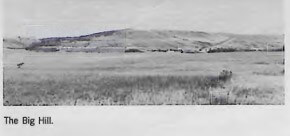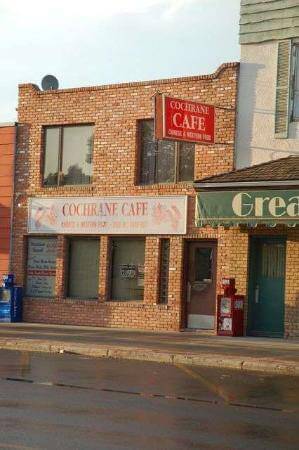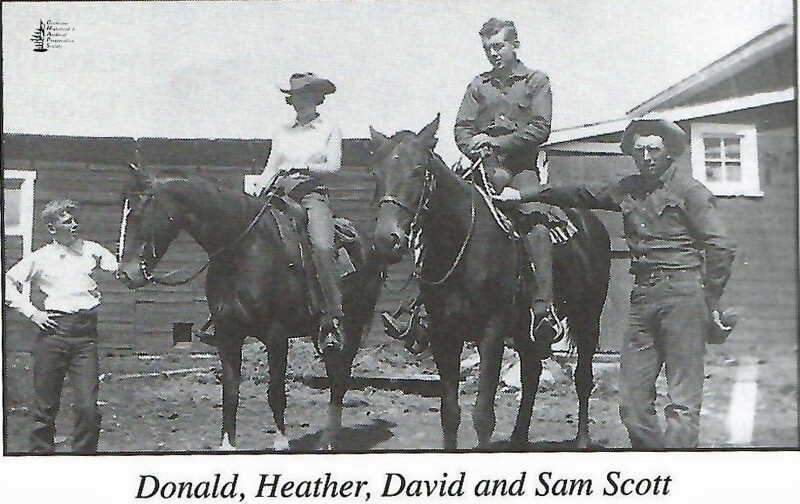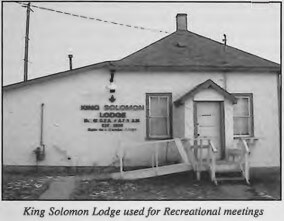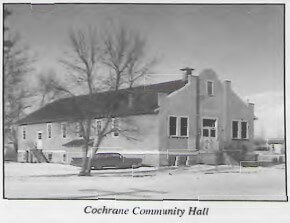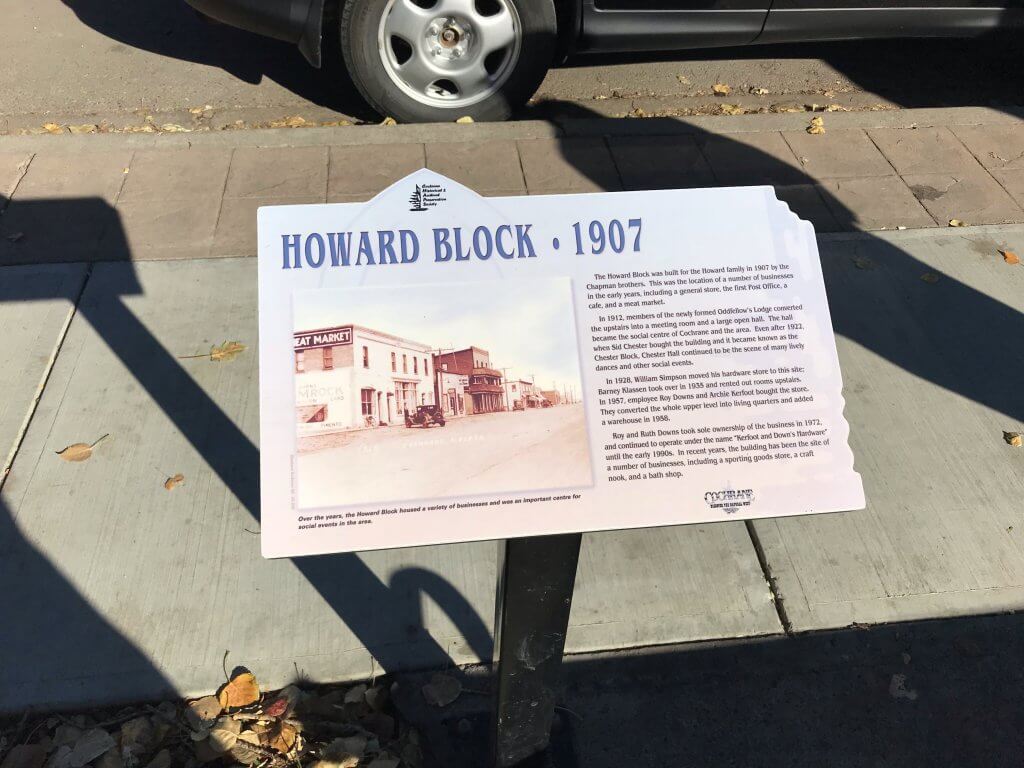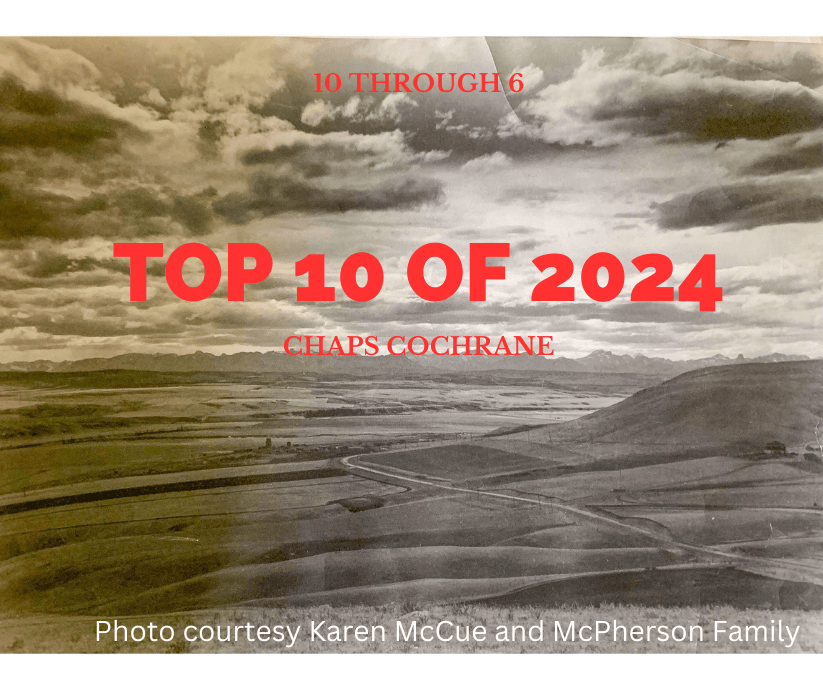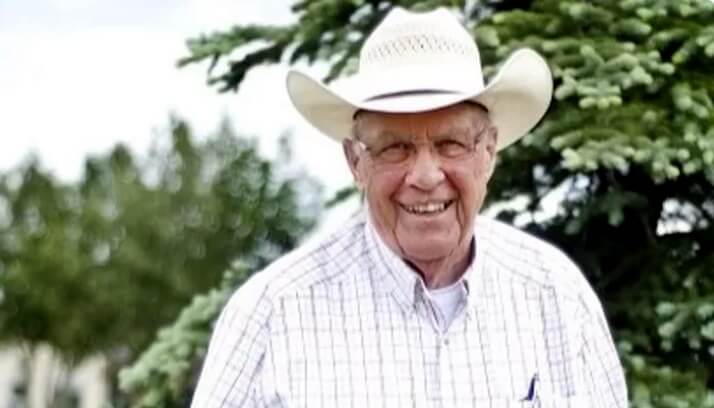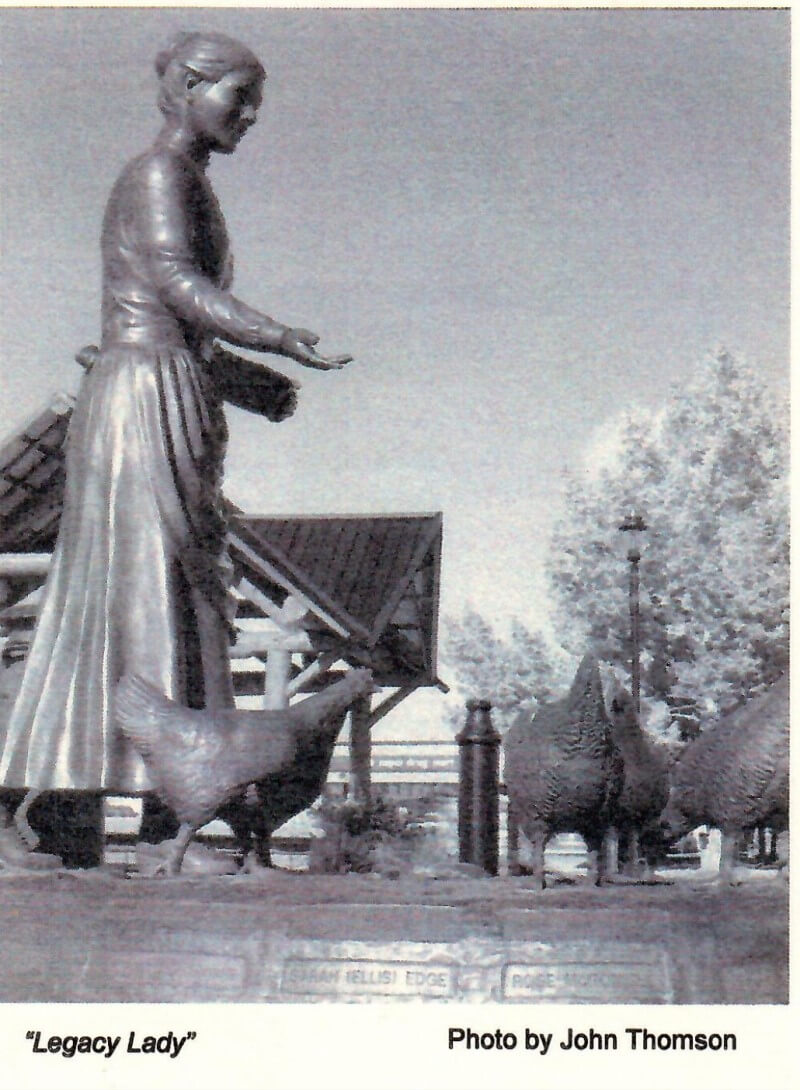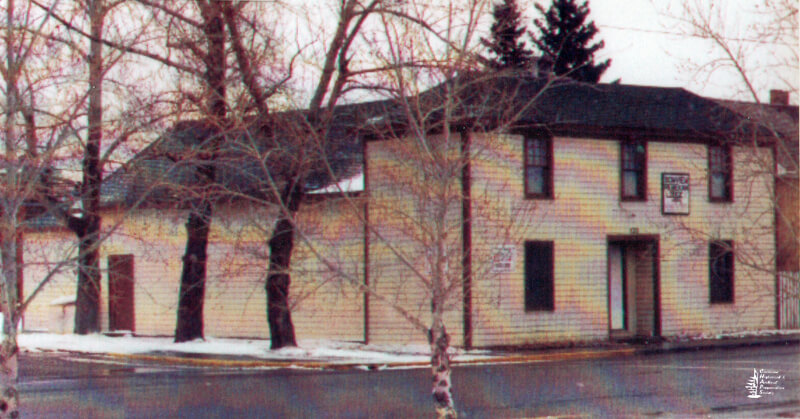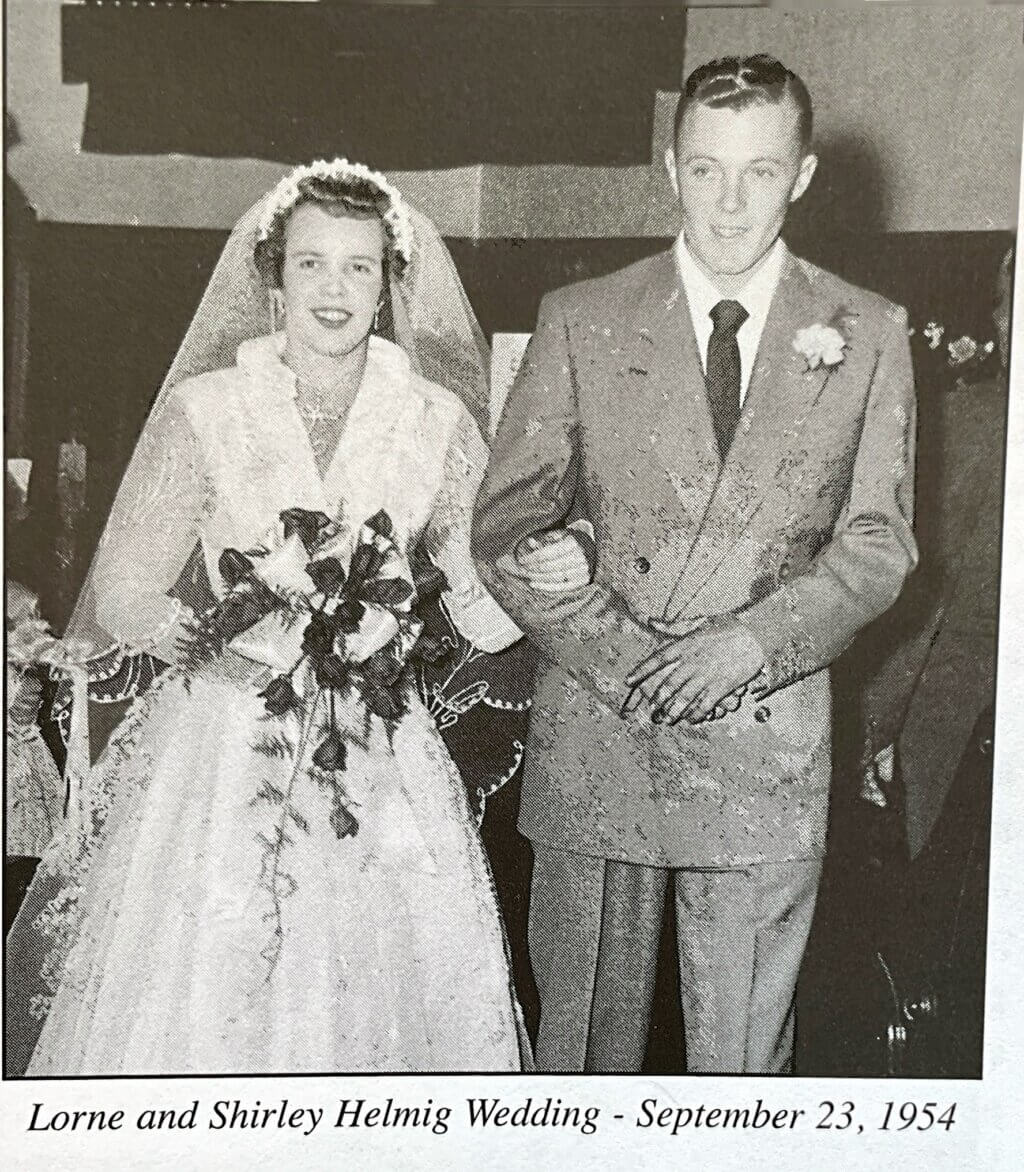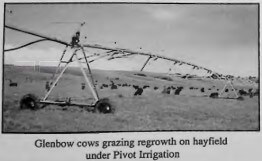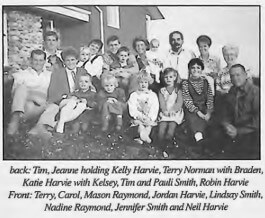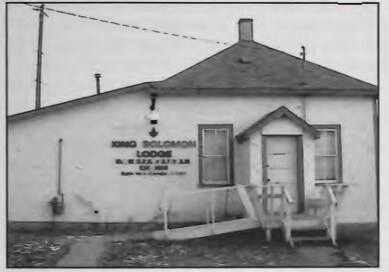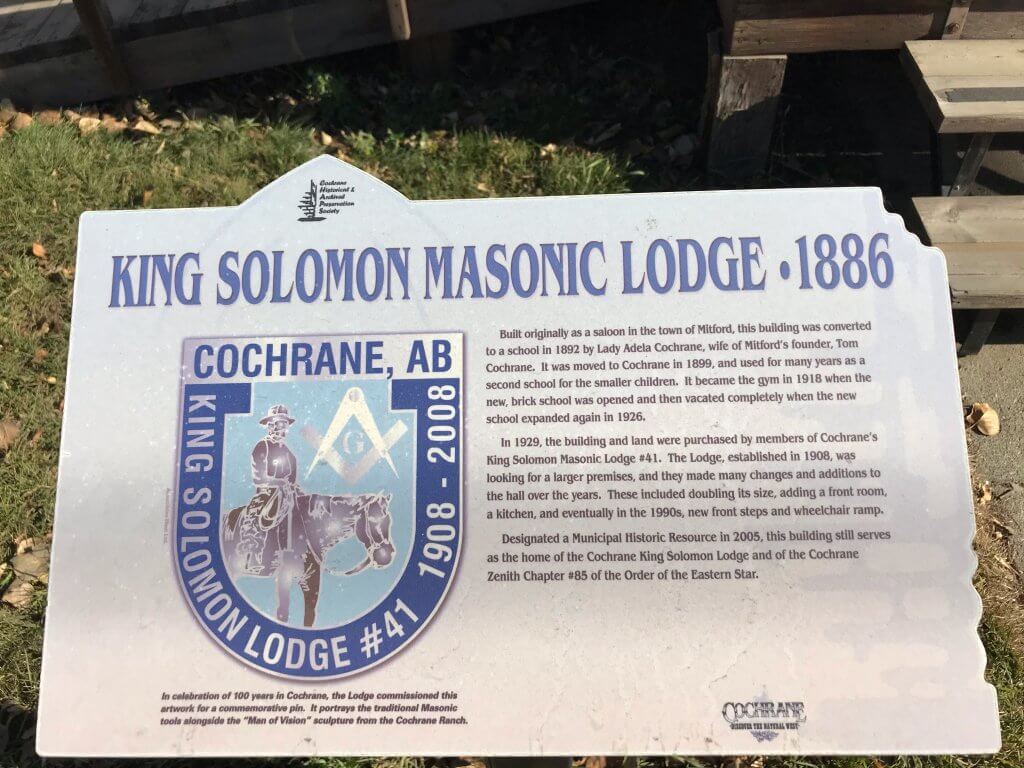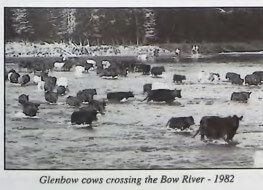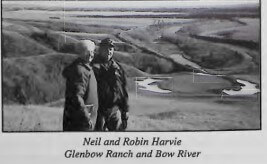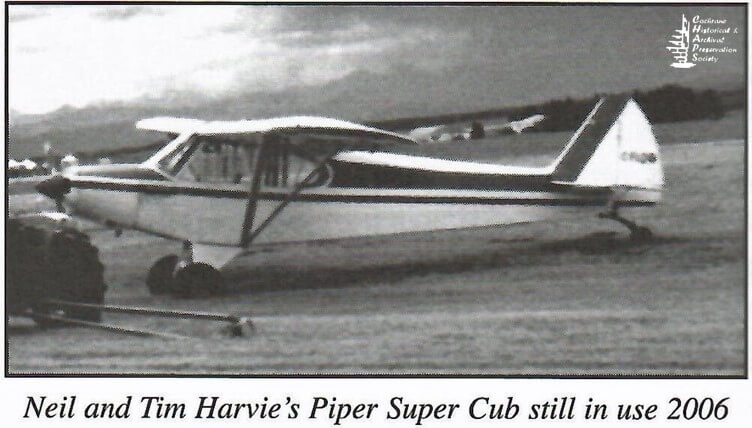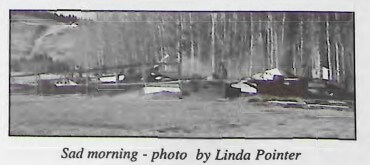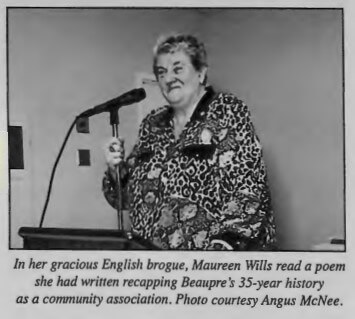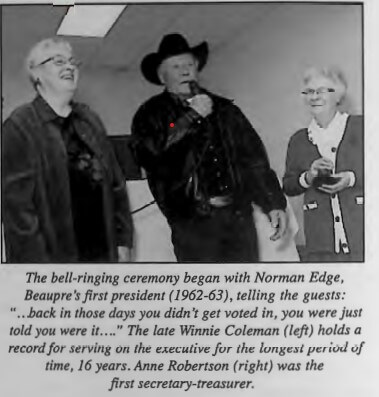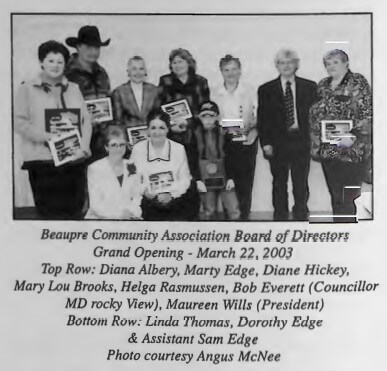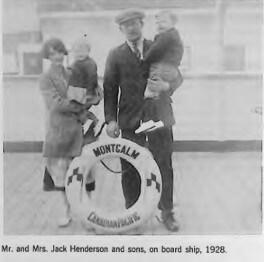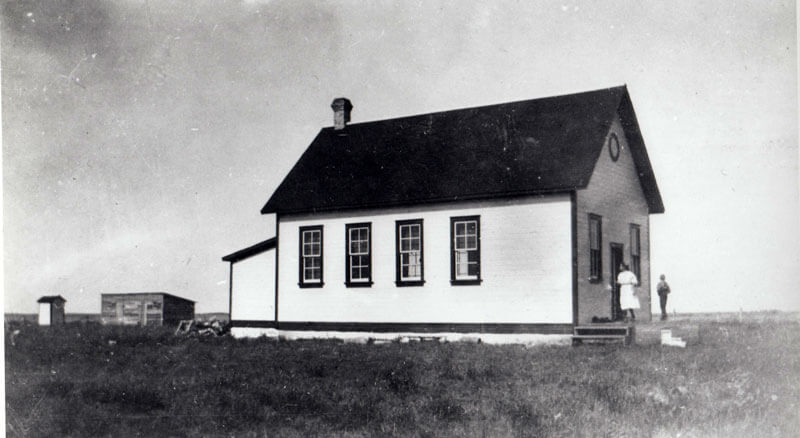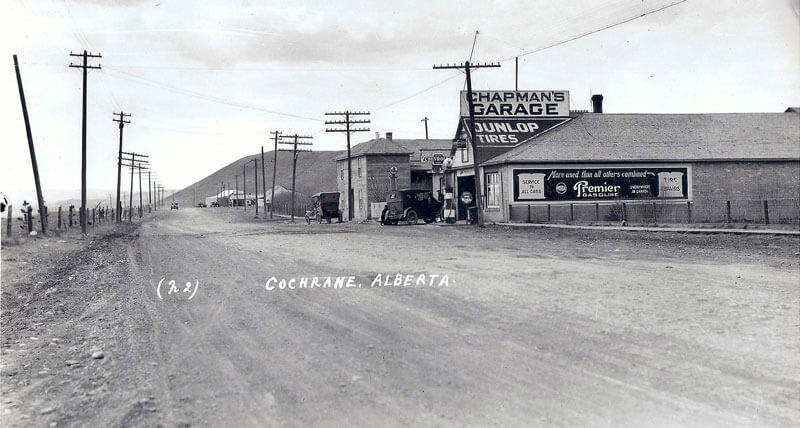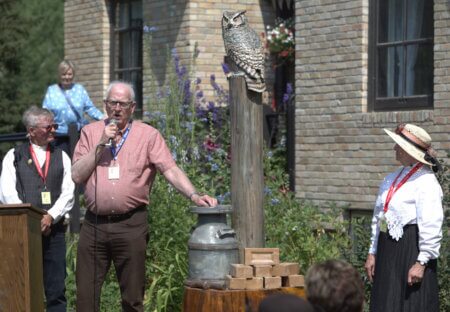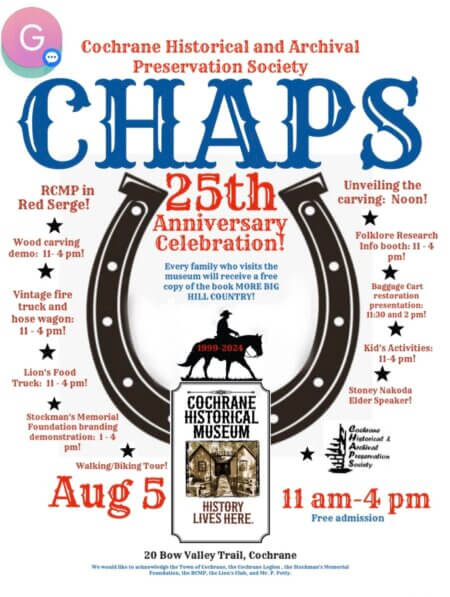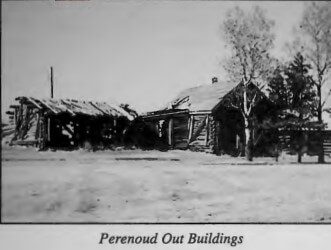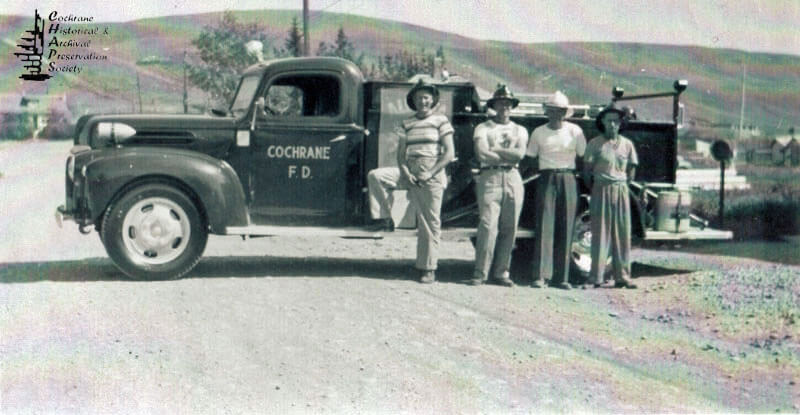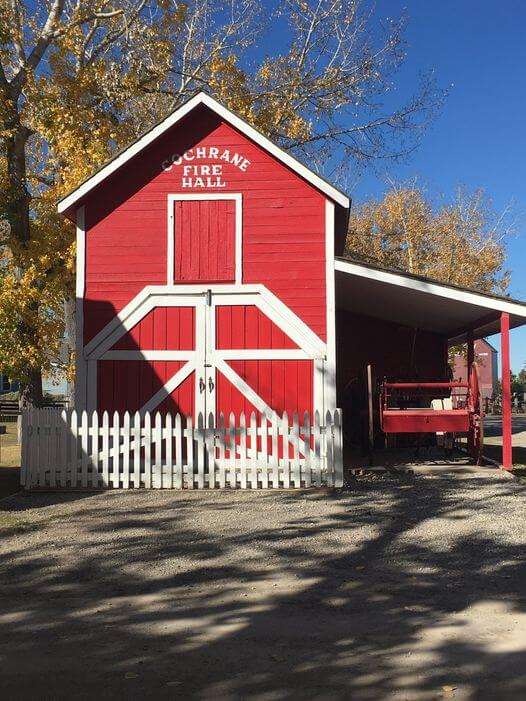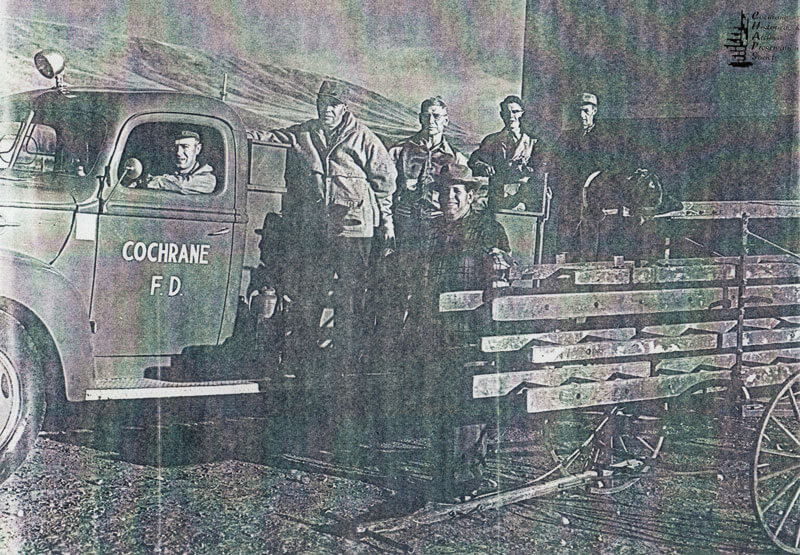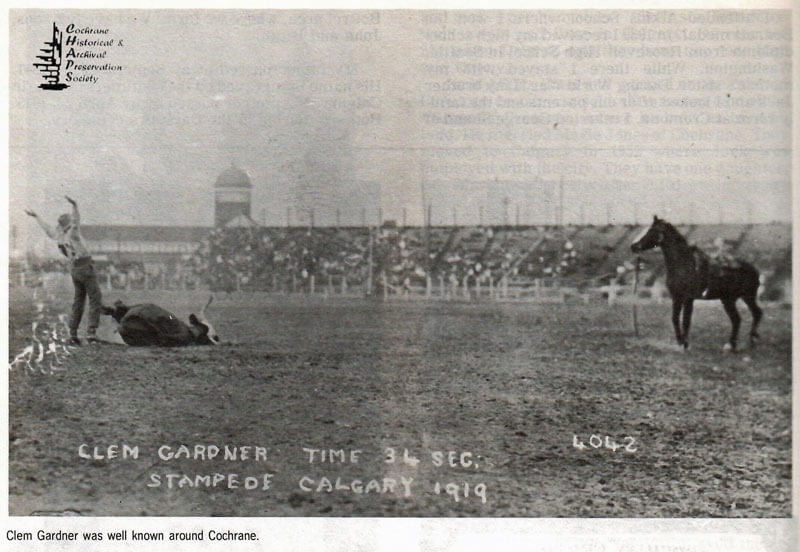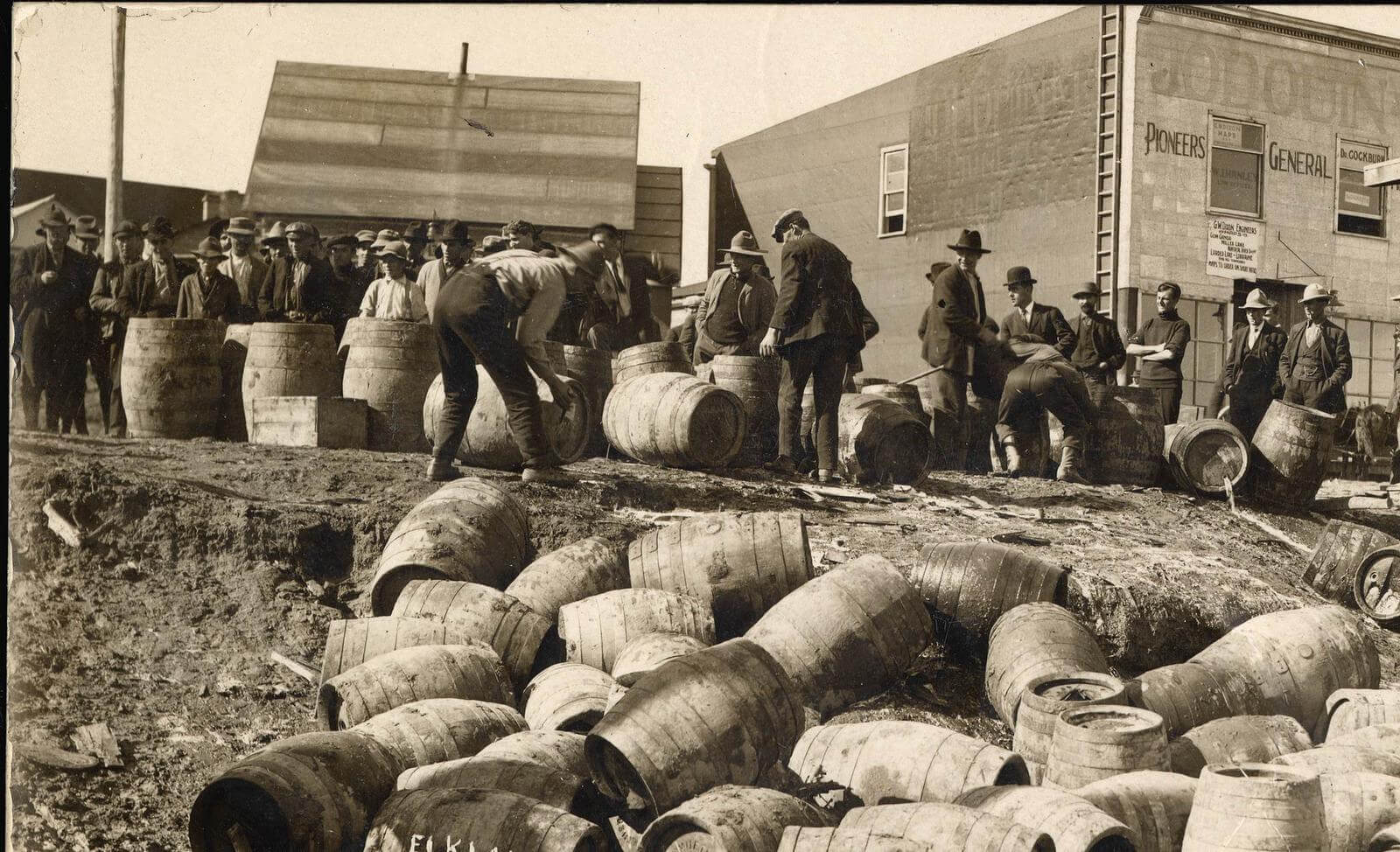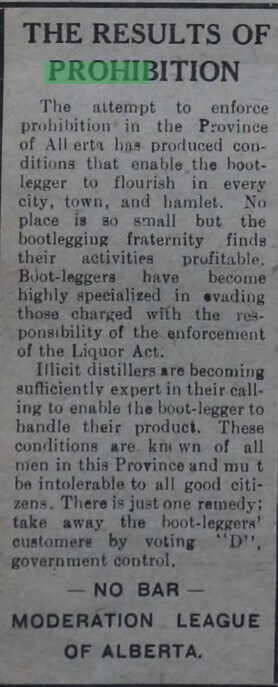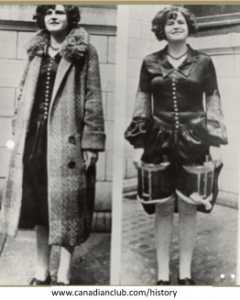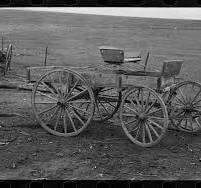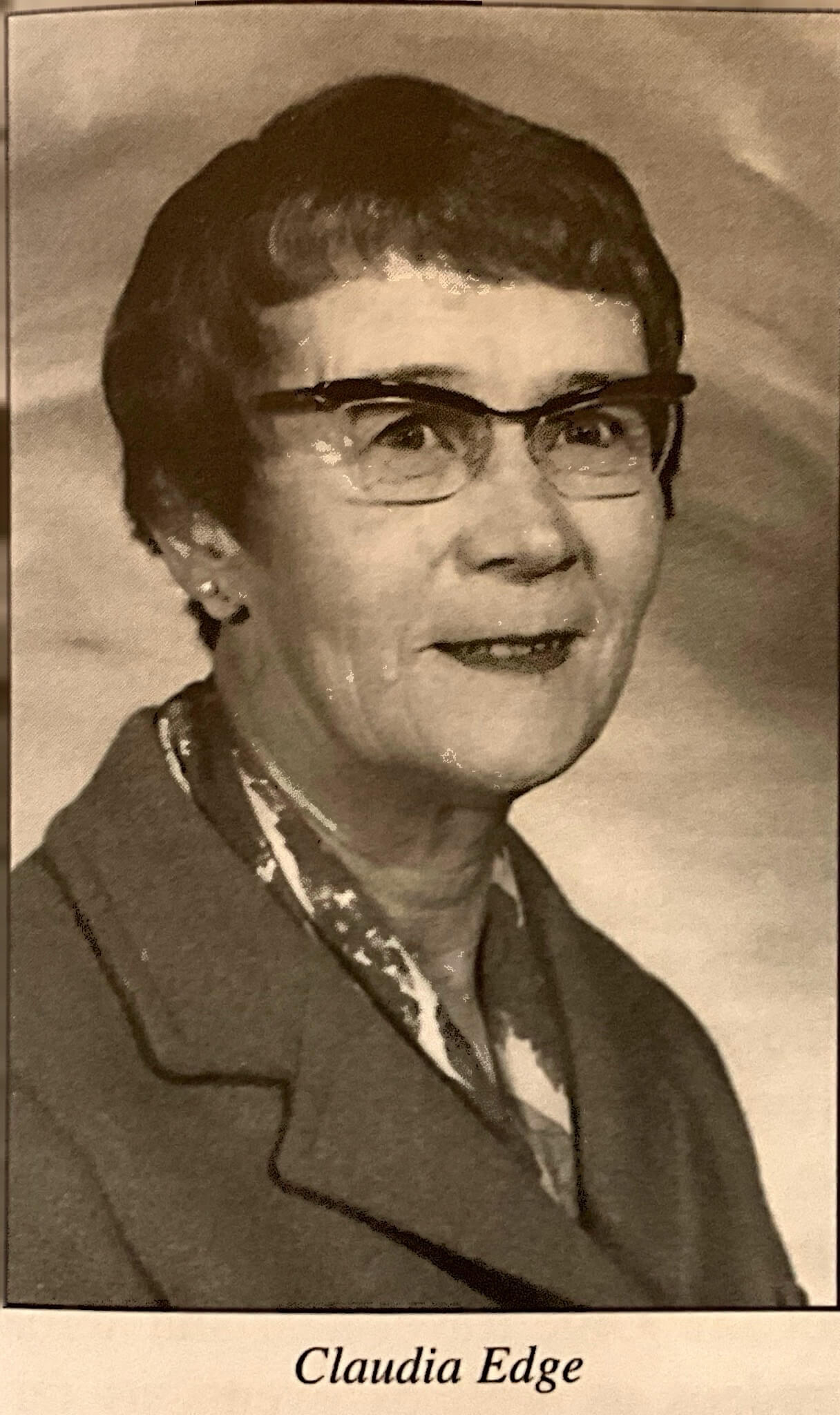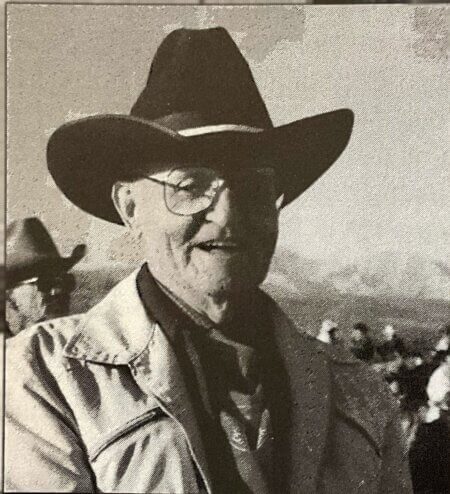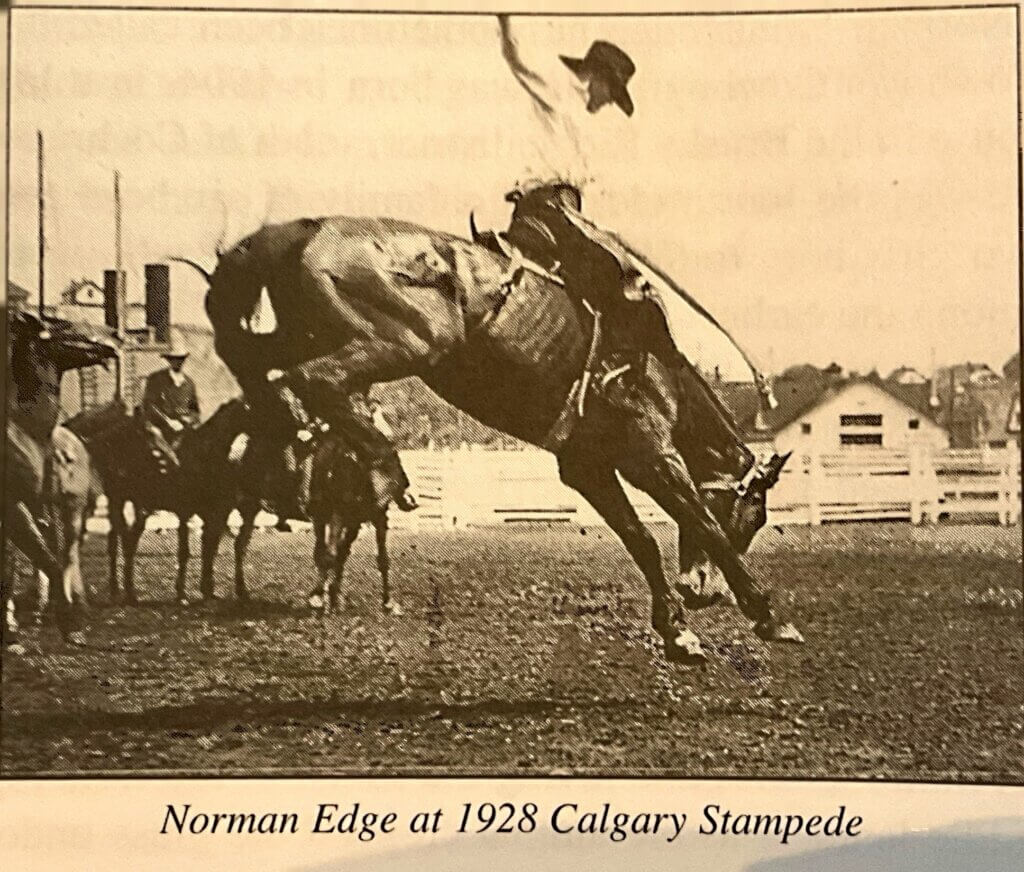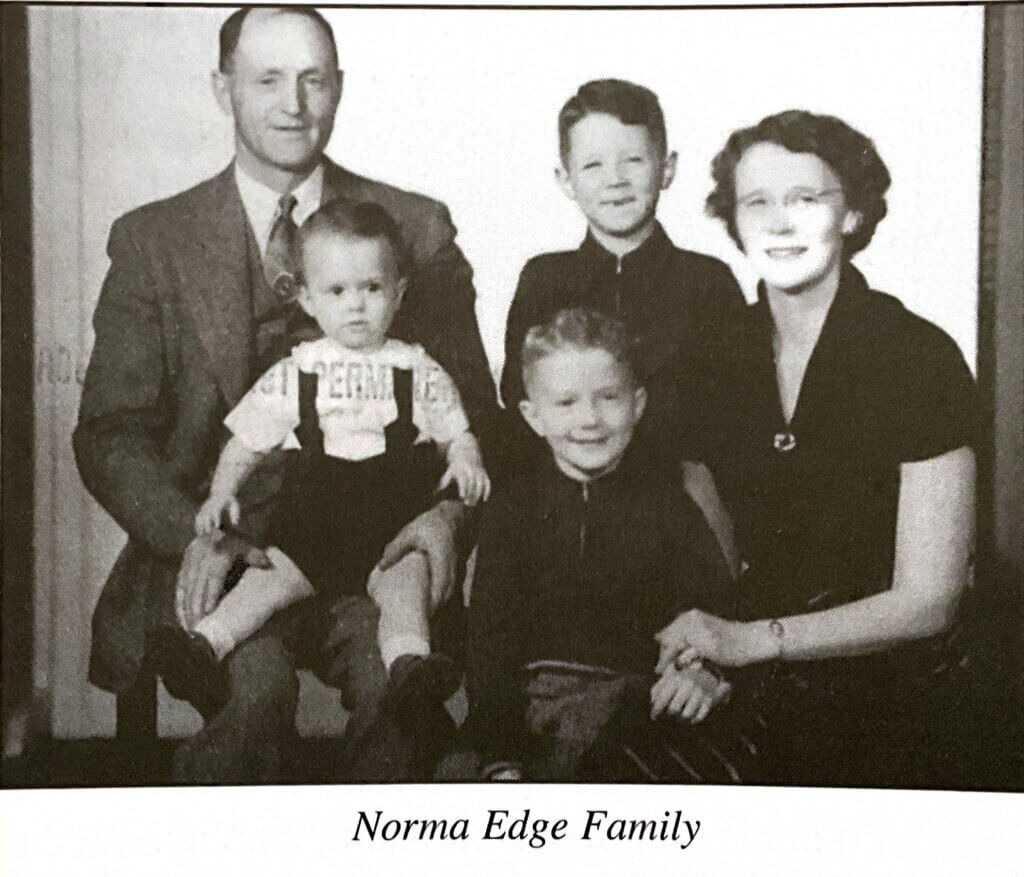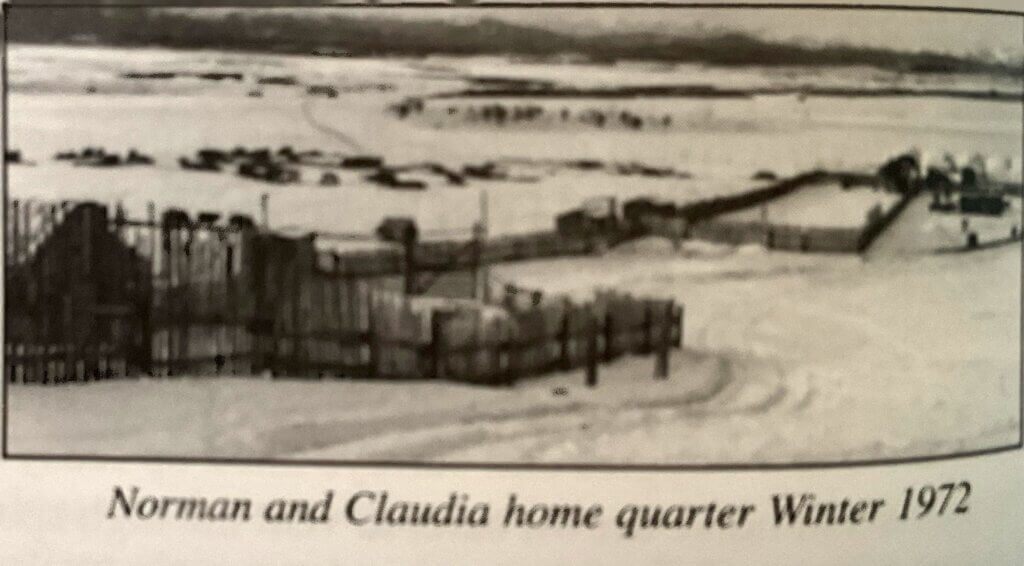page 158 More Big Hill Country 2009
Guiding in Cochrane
Although the Canadian Girl Guide organization was not officially registered until 1913, Guiding in Alberta was underway as early as 1911. The first mention of this concerns two Girl Guides from the Cochrane District who went over to London for the Coronation of King George V. Unfortunately we have no record of who those girls were but it is probable they had close connections in Britain where the Boy Scout and Girl Guide movements had just recently started. At first, the Girl Guide program was mainly based on the available Boy Scout manuals and information. The earliest uniform the girls wore reflects the Scouting influence. Guide Companies and Brownie packs got their uniforms, books and badges directly from England. An official Girl Guide Association was formed in Calgary as early as 1915 to support the Guide companies which had been operating there for several years; by 1924 Cochrane and Sarcee requested information and inclusion in the association.
Many of the members are children from lonely farms, whose names were brought in to the Calgary Commissioner by members of the Royal North West Mounted Police.”
In the early years there was great difficulty in finding women to lead the girls, and in training these leaders. “In the pre-war times many women felt they hadn’t the qualifications or experience to work with the young girls, besides having large families at home to care for … Even professional training as nurses, teachers or stenographers though useful, was only one small aspect of what a leader needed to know. It was also a challenge to test the badge-work the girls had done, as Girl Guides worked for proficiency badges, and a very high standard of workmanship was expected.”
The list of Badges was extensive and remarkable. The Cook’s badge of 1915 demanded, among other requirements, that the applicant be able to pluck a bird and truss it or skin and clean a rabbit, besides the ability to mix dough and bake bread. Many badges dealt with household tasks, from the “Domestic Service” one to “Decorative Needlework”. These did not all involve what was then considered “women’s work”: the Handywoman badge required that a girl know how to lay linoleum and re-pane a window; the Cobbler badge required one to be able to sole and heel a pair of boots. Several involved facets of farming from beekeeping to tending milk cows. Others involved a great deal of practical know ledge of first aid and nursing. From as early as 1938 there was an Airwoman badge. During the depression, uniforms were often made out of dyed flour sacks. The hats were also homemade. The biggest expense was the belt, since they were of leather. It was in the thirties that Girl Guides first started selling cookies as a fundraiser.
Many children from Cochrane no doubt attended the huge rally held in Calgary in 1935 for Lord and Lady Baden Powell, the leaders of Scouting and Guiding. The Baden Powells travelled across Canada several times; Cochrane Scouts and Guides would wait at the train station to see their heroes as they passed on the train. On the 1935 visit, Lady Baden Powell was made an honorary member of an Indian band and given the name “Otter Woman” at the Sarcee Indian Reserve. In 1939 out-of-town Guides and Scouts flocked to Calgary by special train to be hosted by the Calgary organization when Lord and Lady Baden Powell visited. Rural Guides were served dinner in the old Board of Trade rooms, while the boys were fed at Victoria Park. Though we know Guides everywhere were doing war work in the early 1940’s, there is no record of what if anything, was happening in Cochrane.
However, by the early 1960s Girl Guide & Brownie groups were flourishing here again. Initially, they operated under the jurisdiction of the provincially administrated “Three Sisters District” which included Canmore, Exshaw, Banff, Cochrane and Westbrook. Eventually Cochrane and Westbrook became known as “Co-West” District which was registered in Calgary Area. Mrs. Maberly was Commissioner from 1959 – 1961.
In 1969 a Guide Company under the leadership of Lois Barkley was meeting in Westbrook School. Originally the 1st Westbrook Company, it changed its name in 1971 to Calgary Company 233. Laura Jahns, Myrtle Dewdney, Janet and Kathy Schneidmuller, Barbara Willoughby, Wendy Toole and Jackie Harbidge were leaders in that unit. A Brownie Pack was first registered in Westbrook in 1959 but nothing is known of the group until Barbara Miller became ‘Brown Owl” from 1969 – 1975. The girls enjoyed annual sleigh rides and skating parties along with other District events. The Guide Company closed in 1979 because there were not enough girls, however, Brownies continued there for a number of years longer.
From 1959 until 1978, Guide meetings in Cochrane were held in the Community Hall, then they moved to the Rebekah Lodge on First Street for some time. Guide Leaders included Rose Lee, Ann Hunwick, Dorothy Brickett, Dorothy Wiley, Frances de Vries, Sheila Wigton, Kass Beynon, Joan MacDonald and Joan Hutchinson, but the longest serving Guider was Melva Blood, who was Guide Captain from 1969 to 1983. Leaders helping her were Diane Edgelow, Alice Faye Watts, Pauline Schmid, Vi Ankerstjerne and Linda Moor.
The 232 Company (as it eventually became) participated enthusiastically in the Boy Scout sponsored Calgary Ice Stampede, an annual event in the city for over 40 years. They won first place in the Girl Guides Chuckwagon competitions in 1973 and 1974. They also won first place in the Barrel Racing Competition in 1976, the only year this event took place. Company 232 was an avid competitor in the Canoe Races, winning first place in 1980, 1981 and 1983, as well a second place in 1979 and 1982. The ‘canoes’ had flat bottoms and were propelled across the ice by four paddlers. The race began with a launcher giving the canoe a hearty push to get it going. The paddlers raced to the other end of the ice where they turned around and were assited by a second launcher to push off and race back to the finish line. The challenge was staying on the canoe. These events also required creative costume, for which the Cochrane Guides soon acquired a reputation. The Guides also competed annually in the Cochrane and District Ice Stampede from 1975 – 1979 when this event was discontinued.
As well as the successes at Ice Stampedes, some of the Cochrane Girl Guides received other recognition as well. In I 977 Heather Blood was chosen to attend the International Guiding Camp on Cape Breton Island, Nova Scotia. Lisa Ankerstjerne and Gina Spicer attended a camp in Ontario in 1979. Heather Lock represented Alberta at an International Camp at Herefordshire, England. Kari Brooks was chosen valedictorian at the All-Round Cord Ceremony held at Knox United Church in March 1983 for all Calgary Area Guides.
For many years the girls held their annual cookie sales plus a tea and bake sale. (Cookies in 1983 were $1.50 a box.!) The girls planted trees at the new Camp Jubilee and helped with campsite clean-up. They fundraised for both Olave House in England and the new Girl Guide Centre on Brownsea Drive in Calgary, also participating in the annual Calgary Area Bazaar, which helped finance the Calgary Area Girl Guide Camps. In Cochrane, they took part in the annual Remembrance Day Parade and in the Guide/Scout Week Thinking Day Service.
Brownie meetings in Cochrane were held in Andrew Sibbald School, then the Rebekah Hall, the Community Hall, St Andrews United Church, and later at Glenbow School. Pack 232 was first registered as the 1st Cochrane Pack in 1959 but closed in 1976 as Calgary Pack 95 was also operating then (as of 1973) and at that time two Brownie Packs were not needed. By 1979, however, Pack 4 was opened to accommodate the waiting list caused by the growth of the community, and another unit, Pack 44, opened in 1982. Helen Helfrich was one of the longest serving Brownie leaders, from 1959 – 1973. Peggy Lock and Joan Broatch were active in the seventies, Wendy Sedman, Carrol Moore, Betty Goodsell in the early eighties.
In March 1962, Brownies from Cochrane attended a Rally at the Stampede Corral honoring Lady Baden Powell. In 1974 one Brownie pack formed the Colour Party for the Cochrane Cubs Musical Ride at the Calgary Ice Stampede. The girls had an annual banquet, participated in the “Rangeland Frolics Parade”, and made gifts for the residents of Big Hill Lodge as well as other service projects.
From 1973 – 1978 there was a Brownie unit meeting at the Bearspaw Lion Hall under the leadership of Violet Johnston, Marilyn Wickes and Pauline Schmid. Pack 178 was a frequent participant in the Cochrane Ice Stampede, Rangeland Frolics and other District events.
From 1977 to 1979 a group called “Busy Bees” operated in Cochrane, first at the Community Hall, then at Mrs. Matthews’ Day Care Centre. Their mandate was to provide an activity for girls interested in but not yet old enough to be, Brownies. The Hive made gifts for a little girl in the hospital and gave Christmas baking to a needy family. The Busy Bee program was disbanded in 1979 to be replaced later with Sparks.
Rangers are what once were called “Senior Guides”, older girls who continue to challenge themselves through Guiding. Girls from Cochrane have been involved in the program, usually as part of a Calgary unit. Peggy Schlosser, a leader from Cochrane, took a group of Rangers to an International camp in England in 1991. In the 1960’s, Air Rangers were active, in charge of Mrs. Ronald Smylie, a Calgarian, holder of a private pilot’s license and Rosella Bjornson, who at that time had a commercial pilot’s license. These girls enjoyed all the aspects of flying. The ten Air Rangers and their leaders used a Cessna 170 and the airstrip at Two Rivers Ranches, just west of Cochrane past what is now the Ghost River Dam.
In 1968 Calgary area was looking for a site close to the city for year-round camping and training. Calgary businessman Stan Pallesen was impressed with Girl Guides, appreciated what their program did for girls and felt he, too, could support them. Through his efforts, 90 acres immediately south of the new Highway 22 bridge in Cochrane were purchased and became Camp Jubilee. In the early 1970’s, as the site was developed, Lawland Gardens, a tree nursery in Balzac, donated over 100 trees and shrubs. Rockyview municipality, Brooks Horticultural Centre and an lODE chapter donated trees as well. Stan Pallesen took on the camp as his retirement project and spent countless hours there tending the new plantings and creating and maintaining the campsites. This popular facility continues to be heavily used by Girl Guides from Calgary and Cochrane. It has hosted a number of international events which draw girls and women from all over Canada and around the world. The Town of Cochrane also uses the site for children’s summer programs, so many Cochrane youth have benefited from this camp along the Bow River.
It would be impossible to list all the women from Cochrane who have been involved in Girl Guides throughout the years. Some stayed with the program only a few years, others stayed on as leaders or as Commissioners, helping generations of girls enjoy Guiding. Sheila Wigton was one, Helen Helfrich and Melva Blood were others – and there are many more, who gave time, energy and enthusiasm to promoting “the Great Game of Guiding” in this area. Many young women from Cochrane, Bearspaw and Westbrook benefited from your caring.

